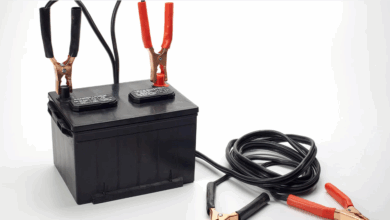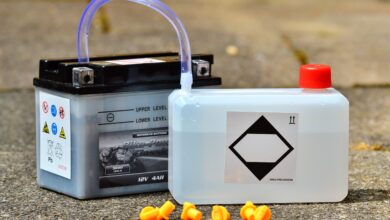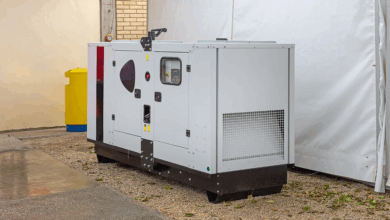Your Step-by-Step Guide to Connecting a Generator for Home Backup

Your Step-by-Step Guide to Connecting a Generator for Home Backup
Power outages are more than just an inconvenience; they can disrupt daily life, cause financial losses (spoiled food, frozen pipes), and even pose safety risks. Having a reliable home backup power system like a generator can provide peace of mind and essential functionality when the grid goes down.
While portable generators are relatively straightforward to use, connecting one safely and effectively to power your entire home (or significant circuits within it) requires more than just extension cords. This guide will walk you through the recommended and safest method for connecting a portable generator for home backup, emphasizing preparation, proper equipment, and the critical importance of safety.
Why Proper Connection Matters: Avoiding "Backfeeding"
Before we dive into the steps, it’s crucial to understand the primary danger of improper generator connection: "backfeeding." Backfeeding occurs when your generator’s power flows back into the utility grid through your home’s electrical system. This is incredibly dangerous for utility workers attempting to restore power, potentially causing severe injury or death. It can also damage your generator and home’s electrical system.
Proper connection methods use devices specifically designed to prevent backfeeding, ensuring a safe separation between your generator’s power and the grid’s power.
Method Highlight: The Transfer Switch & Generator Inlet Box
While extension cords can power individual appliances directly from the generator (ensuring the appliance’s plug is directly in the generator’s outlet), this is impractical and unsafe for powering multiple essential circuits (lights, furnace, refrigerator) throughout your home.
The transfer switch and generator inlet box method is the safest and most effective way to connect a portable generator to your home’s electrical panel, allowing you to power selected circuits without the risk of backfeeding.
- Generator Inlet Box: This is a weather-resistant outdoor receptacle mounted on the exterior of your home. It serves as the safe connection point for the heavy-duty power cord running from your generator.
- Transfer Switch: Installed inside your home near your main electrical panel, the transfer switch is a dedicated electrical sub-panel. It allows you to manually or automatically switch power for specific circuits between the utility grid and the generator. Critically, it creates a physical break, preventing generator power from reaching the main panel and thus the grid.
Crucial First Step: Assess Your Needs and Plan
Before you even buy a generator or any connection equipment, thorough planning is essential.
- Determine Your Power Needs: What do you absolutely need to run during an outage? Lights in key areas? Refrigerator/freezer? Furnace fan? Well pump? Sump pump? Medical equipment? Avoid trying to power everything. List essential items and find their wattage requirements (running and starting/surge watts). This determines the size (wattage) of the generator you need.
- Choose the Right Generator: Select a generator with sufficient wattage for your needs. Consider fuel type (gasoline, propane, dual-fuel), runtime, noise level, and features like electric start.
- Select the Generator Location: This is CRITICAL for safety. Generators produce carbon monoxide (CO), a colorless, odorless, deadly gas.
- Minimum Distance: Place the generator at least 20 feet away from your house or any occupied building.
- Ventilation: Ensure it’s in an open area where exhaust can dissipate freely. Never operate it in a garage, basement, shed, or near windows, doors, or vents that could allow exhaust to enter your home.
- Security and Protection: Choose a level spot, protected from rain or snow (a generator cover or open-sided shelter is recommended, not enclosing it).
- Plan the Connection Path: Where will the generator sit in relation to the house? How far is it from the planned location of the generator inlet box? This affects the length of the power cord needed.
- Install Carbon Monoxide Detectors: Install battery-operated or battery-backup CO detectors on every level of your home and near sleeping areas. Test them regularly.
Step-by-Step Guide: Connecting Your Generator (Assuming Transfer Switch/Inlet Installed)
Disclaimer: The installation of a generator inlet box and transfer switch involves working with high-voltage electricity and MUST comply with local electrical codes. For safety and legal reasons, this installation should be performed by a qualified, licensed electrician. Attempting this yourself without proper knowledge and tools is extremely dangerous. This guide focuses on the user’s steps after professional installation.
- Position the Generator Safely: Place the generator in your pre-determined outdoor location, at least 20 feet from the house and away from windows, doors, and vents. Ensure the exhaust is directed away from occupied structures.
- Inspect the Generator: Before starting, check the fuel level, oil level, and air filter. Inspect the power cord for any damage (frayed wires, cracked insulation).
- Connect the Power Cord: Take the appropriate heavy-duty generator power cord (usually a large, thick cable with specialized locking plugs on both ends) and firmly plug one end into the generator’s power outlet (often 30A or 50A, 240V). Run the cord directly and safely to the generator inlet box mounted on your house. Plug the other end firmly into the inlet box receptacle. Ensure the cord is not a trip hazard.
- Go Inside and Prepare the Main Panel:
- CRITICALLY IMPORTANT: Turn OFF the main breaker in your home’s electrical panel. This completely disconnects your house from the utility grid, preventing any possibility of backfeeding. Your entire house is now without utility power.
- Go to your transfer switch panel. All the circuit breakers on this panel should be in the "OFF" position.
- Start the Generator: Go back outside to the generator. Follow the manufacturer’s instructions for starting it. Ensure it’s running smoothly and up to operating speed.
- Transfer Power at the Transfer Switch: Go back inside to the transfer switch panel. Operate the transfer switch mechanism (lever, sliding plate, etc.) according to its instructions to switch the power source from "Line" or "Utility" to "Generator" or "Gen." This connects the circuits controlled by the transfer switch to the power coming from the inlet box.
- Energize Circuits (Selectively): One by one, flip the breakers on the transfer switch panel for the circuits you need to power. Do not turn them all on at once; this could overload the generator. Start with the most essential items (e.g., furnace fan, refrigerator) and add others gradually, monitoring the generator’s load meter (if equipped) and performance. Do NOT turn on circuits controlled by breakers NOT on the transfer switch.
- Monitor: Periodically check the generator outside (fuel level, performance) and listen for alarms (CO detectors inside).
Shutting Down Your Generator System Safely
When utility power is restored or you no longer need the generator, follow these steps in order:
- Disconnect Appliances/Circuits: Go to the transfer switch panel and turn OFF all the circuit breakers that were previously on.
- Transfer Power Back: Operate the transfer switch mechanism to switch the power source back from "Generator" to "Line" or "Utility."
- Turn ON Main Breaker: Go to your main electrical panel and turn the main breaker back ON. Your house is now reconnected to the utility grid.
- Let Generator Cool Down: Go outside and let the generator run for a few minutes with no load. This helps it cool down properly.
- Shut Off Generator: Follow the manufacturer’s instructions to turn off the generator.
- Disconnect Power Cord: Unplug the generator power cord from the generator and the inlet box. Store the cord safely.
Essential Safety Precautions (Summary)
- Carbon Monoxide: ALWAYS operate generators outdoors, far from buildings. Install CO detectors.
- Electrical Shock/Backfeeding: NEVER plug a generator directly into a wall outlet. Use a professionally installed transfer switch and inlet box.
- Fire Hazards: Store fuel safely. Never refuel a hot generator. Allow generator to cool before refueling.
- Proper Cord: Use a heavy-duty, properly rated generator cord designed for outdoor use.
- Overloading: Do not exceed the generator’s wattage capacity. Start essential appliances first.
- Grounding: Ensure the generator is properly grounded according to manufacturer instructions and local codes.
- Maintenance: Keep the generator well-maintained according to the owner’s manual.
FAQs
- Q: Can I just use extension cords to power things from the generator?
- A: You can use heavy-duty outdoor-rated extension cords to power individual appliances plugged directly into the generator’s outlets. However, this is impractical for powering multiple items around the house and is NOT a substitute for safely connecting to your home’s wiring.
- Q: What is backfeeding and why is it dangerous?
- A: Backfeeding is when your generator’s power travels backward through your home’s electrical system and out onto the utility grid. It’s lethal to utility workers and can damage equipment. A transfer switch prevents this.
- Q: Do I really need a transfer switch?
- A: Yes, if you want to safely power circuits within your home’s wiring system (like lights, furnace, or wall outlets). It’s the only safe way to connect a generator to your home’s electrical panel and prevents dangerous backfeeding.
- Q: Can I install the transfer switch and inlet box myself?
- Q: How far away from the house should the generator be?
- A: At least 20 feet (6 meters) away from the house or any occupied building, and positioned so the exhaust is directed away from windows, doors, and vents.
- Q: Does the generator need to be grounded?
- A: Yes, follow the manufacturer’s instructions. Some generators with GFCI outlets may have different grounding requirements, but generally, a grounding rod and wire are necessary for safety. An electrician installing your inlet box/transfer switch can advise on local requirements.
Conclusion
Having a portable generator can be a lifesaver during power outages, providing the ability to keep essential systems running. However, the safety of yourself, your family, and utility workers depends entirely on connecting it properly. While individual appliances can be run via direct cord connections to the generator, safely powering your home’s circuits requires a professionally installed generator inlet box and transfer switch.
Take the time to plan, invest in the right equipment, and crucially, hire a qualified electrician for the installation of the transfer switch and inlet box. Once those components are in place, follow the step-by-step process carefully, always prioritizing the safety precautions related to carbon monoxide, electrical hazards, and fuel handling. With proper planning and execution, you can confidently and safely utilize your generator to keep the lights on and essential systems running when the grid goes dark. Stay safe and stay powered!




![How to Bypass CO Sensor on Generator – [4-Step Safety Guide]](https://www.generator411.com/wp-content/uploads/2025/08/co-sensor-on-generator-390x220.png)